From Soccer to Triathlon Champion
Tom De Bruyn grabbed the win at the IRONMAN World Championships in the M35-39 category but he played mostly soccer until age 27. He grew up in Belgium, then moved to the UK and now resides in the USA. We had a chat with the speedster about racing, training, soccer, life and more.
Slowtwitch: Thank you for your time Tom.
Tom De Bruyn: Thank you for giving the opportunity to share my story.
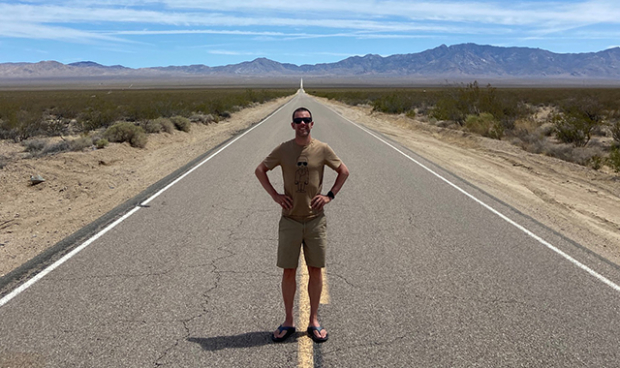
ST: You had a great race in Kona, but where are you now and what are you up to?
Tom: Thank you. I’m back in San Francisco and taking some time to switch my focus to other things. Re-balancing a bit after a big focus on training and triathlon. Enjoying good food, pastries and hiking with my fiancé.
ST: How much of a rest do you usually give yourself after a full IRONMAN and is it different when it is late in the year like with Kona?
Tom: I take at least 4 weeks off with just very light training, usually followed by another 2 weeks of very moderate intensity before going back to full training. My IRONMAN races are typically late in the year. This year was an exception with IM St George, after which I took almost 2 weeks off from structured training.
ST: When did you arrive in Kona this year and how ready did you feel?
Tom: My friend Justin and I arrived 2 weeks out. I worked remotely for one week and we had a very relaxing time. We aligned our sessions and enjoyed the island. Race week was definitely more hectic with all the social commitments and the events. After racing in Santa Cruz (4 weeks prior to Kona) I felt confident my fitness was there, but I was still a bit anxious to deliver on the high expectations I set for myself.
ST: What were those expectations?
Tom: My big dream was to podium in Kona and to see where I would stack up against the top amateurs in the world.
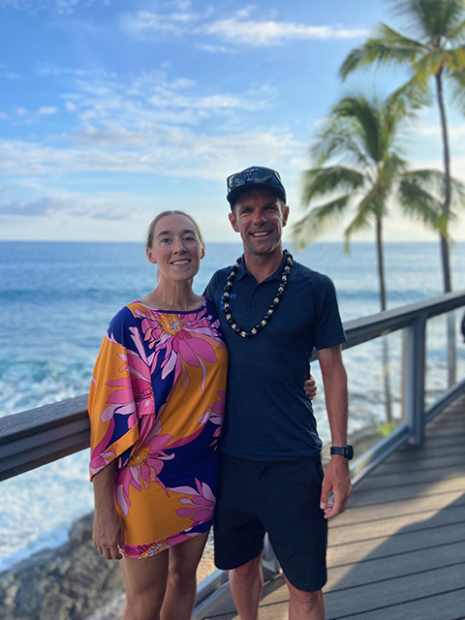
ST: Did you scout the competition prior to race day or is that something you generally ignore?
Tom: Not really. After not racing in Kona for 3 years, it’s pretty hard to know who would show up on the big stage. I knew a few guys who are usually up there but didn’t scout the competition. Race yourself and within yourself.
ST: Let us start with the swim. How did it go for you?
Tom: I’m not really the strongest swimmer. I had a massive focus on my swim in training with much bigger volume than usual. I felt good during the swim and swam relatively conservative (6/10 effort). I was able to hold someone’s feet for probably 3500m after a pretty hectic start. I made my time goal of 1 hour and was stoked.
ST: What about the bike segment?
Tom: I biked pretty aggressive. I knew I had to make up time and didn’t really hold back. I had some company for the first 25 miles but soon I found myself alone keeping a steady tempo. I caught up to a group of 5/6 guys on the climb to Hawi and made some great tactical decisions to stay with the front 2. At the turnaround we were in first place. I took the reins on the downhill from Hawi and only 1 person was able to stay with me. Besides missing an aid station at miles 70, I stayed within my means. The guy who was still with me raced fair and we shared the work for most of the final 35 miles home. In summary, I stuck to my nutrition plan, felt good throughout and raced smart.
ST: Maybe you can share some of your bike details with us. How is it set up?
Tom: I have a FELT FRD with custom Aerocoach front set. My wheels are ENVE SES 7.8 with tubeless continental GP5000 (90psi, width 25 mm). I carry 2 bottles behind my seat and have my aero bottle between my arms. My group set is SRAM RED 12 speed with a single (52) front chain ring. I rode 260 NP with average HR 153.
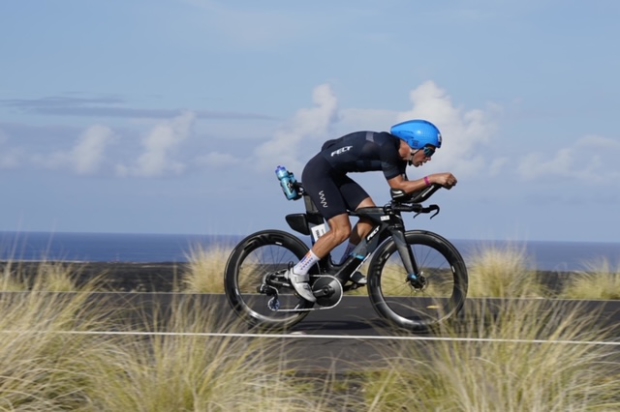
ST: When did you take the lead in your age group and did you actually know for sure?
Tom: Our AG was the first AG to go behind the pro field so it was pretty easy to know my position. I was in the lead from the turnaround on the bike. I though the guy who rode back with me to T2 was also in my age group and didn’t realize until much later he wasn’t. My lead out of T2 was about 2 minutes on the next AG athlete. I consistently extended that lead to about 7 minutes at the energy lab when I realized things had to go seriously wrong to miss out on the win.
ST: Which running shoes did you use? And did you use any specific cooling strategies?
Tom: I used Nike Next%, and I use a cooling T-shirt to protect me from the heat and keep my core temperature down. It looks pretty ridiculous and people have made fun of me throughout the years, but many came back from that and started copying it.
ST: How did you celebrate your win?
Tom: The next day with had a fun team happy hour with the Every Man Jack triathlon team to celebrate all the achievements of the team and thank our amazing support crew. That party was followed with the award ceremony and a wild party at Huggo’s.
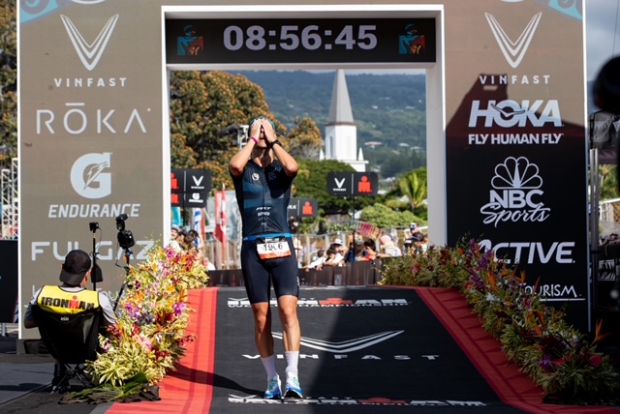
ST: What is your definition of wild?
Tom: [laughs] We partied until the early morning while drinking Mai Tais and dancing and jumping like teenagers on sore legs. It was super fun to hang out with all the teammates and being surrounded by a bunch of pro athletes who were also letting go.
ST: Your background is soccer. Tell us a bit more about that and to what level and age you did that?
Tom: I grew up playing soccer from when I was only a few years old. I played with my friends and many of us made it to the first team when we got older. I stopped playing when I was at the university around age 27.
ST: Not even a bit of soccer now?
Tom: I tried to keep it going when I moved to England from Belgium but soon realized it was not the same anymore. I enjoyed some occasional pickup games in Manchester but that completely disappeared as well after moving to California. I don’t really miss it. It was a big part of my life and it was my social network when I was younger, but I guess that’s what triathlon has become now.
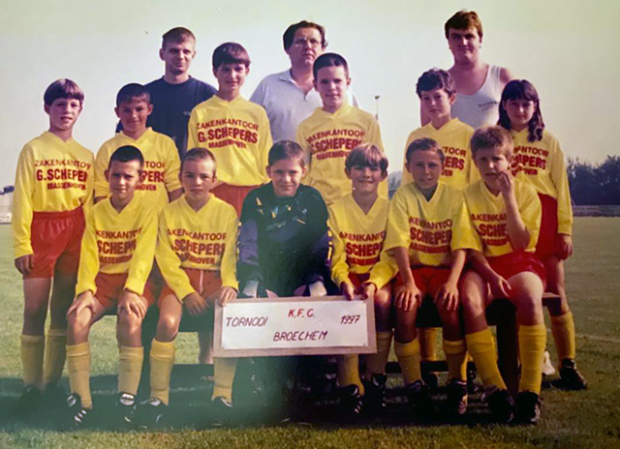
ST: How did you find triathlon?
Tom: My friend who lived in San Diego and who I followed on Strava inspired me. When I moved from Manchester, England to San Francisco, I needed a new support/social network. I followed adult swim lessons back in England and bought a road bike with my signing bonus. I joined a local triathlon team (SF Tri Club) and started exploring the sport.
ST: At what point did you realize you were good at this?
Tom: Am I? [laughs] I guess I realized I was not bad when I qualified for Kona in my first IRONMAN and was accepted to join the Every Man Jack race team soon after. The guys on this team had inspired me to become a stronger athlete for almost 2 years.
ST: What is your day job?
Tom: I’m a scientist for a biotechnology company. We aim to discover and develop new drugs for a variety of indications such as cancer.
ST: Talk about your training and training volume when you are preparing for a big race.
Tom: I train about 20 hours per week with double workouts before and after work almost every day. I try to keep a good balance between social workouts and structured training in more specific key sessions. I train almost exclusively outside and I love to build in specific training camps.
ST: That sounds like quite a load. What about rest?
Tom: I sleep about 8 hours per day. During the weekends I sometimes take a nap as well. I get a weekly massage and do daily mobility routines. I use my Normatec recovery boots and drink a smoothie after key sessions. I don’t really take days off but have a lot of easier days where I just get some easy volume in.
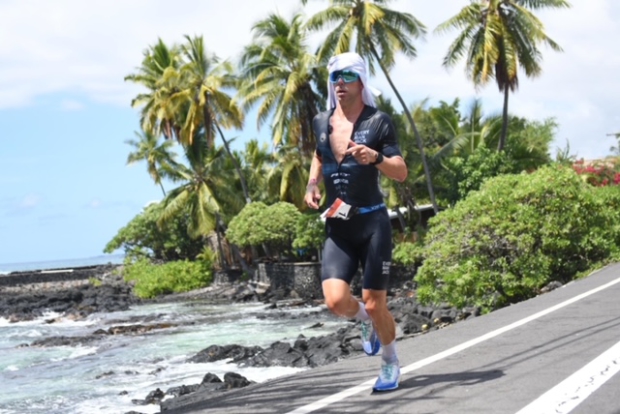
ST: You mentioned swimming as your weakness. What are you doing about it?
Tom: I started swimming more consistently and increased my volume to anywhere between 15 and 20km per week. I also joined a master swim group to get some advice on technique and to be able to swim faster people once in a while.
ST: Please describe one of your harder swim sets.
Tom: If I can do something like this set, I know I’m in decent IM shape
800 WU with drills – 4 x 200 pull on 2:55 (form based)
4 x 400 Descend swim from 5:35 on 5:25 on 6 min
5 x 200 hold 2:40 on 2:55
6 x 100 hold 1:17 on 1:25
200 EZ
ST: Is there anything else we should know?
Tom: I have an amazing fiancé and incredible team mates who have helped to get that Kona bowl. This journey has been amazing and I would like to thank everyone who supported me to chase that crazy dream. At the end of the day, it’s not about the trophy but about the journey and the people.
You can follow Tom De Bruyn via @tomdebruyn1985 on Instagram.


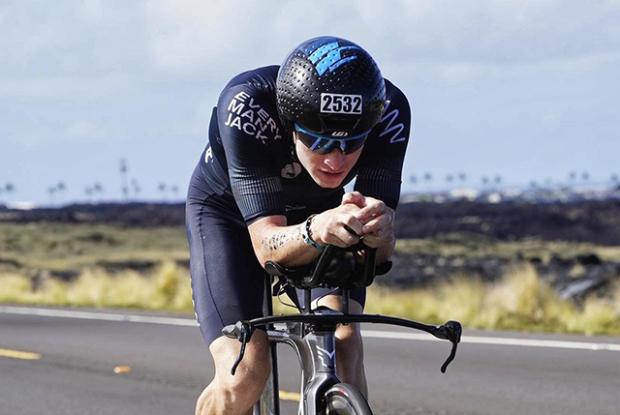
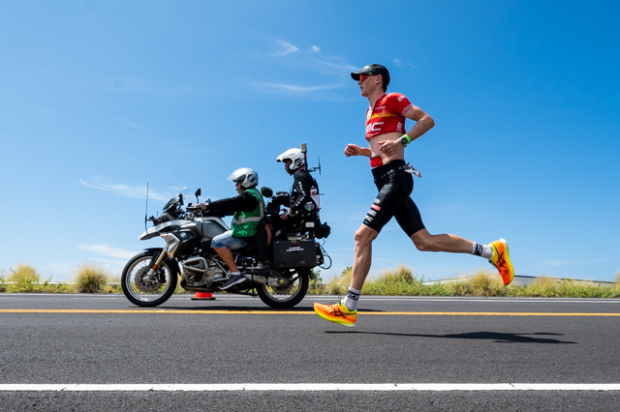
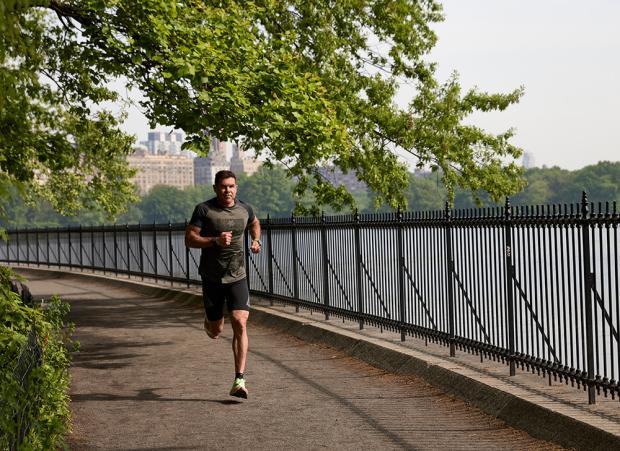
Start the discussion at slowtwitch.northend.network